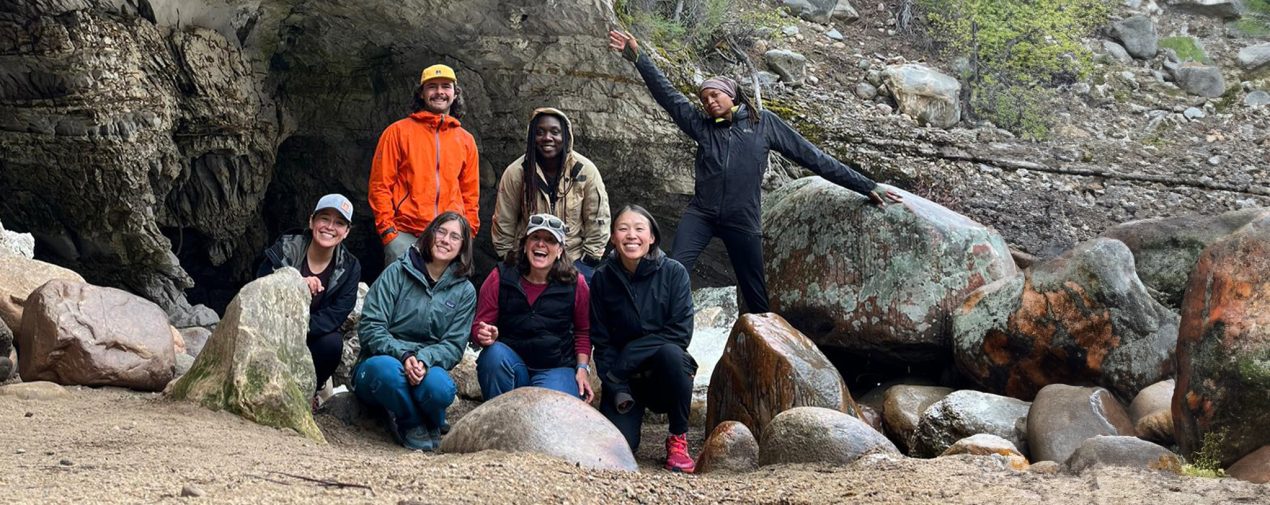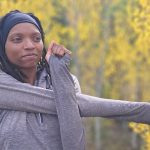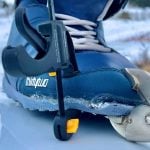Life Mirroring Nature: Diversity as Our Strength
We covered mentorship, culture and heard from Elsie Freland, an Indigenous Senior National Outdoor Leadership School (NOLS) instructor in Part 1, but how did we get to this dilemma in the first place? And what are some ways forward?
Nature is a word that we seem to mostly use to describe forested walks with trails and paths, but the natural world can also be our mirror. One of the key lessons we can learn from nature about Diversity, Equity, and Inclusion is that there are no simple answers. 2020 was far from simple for the United States as it challenged Americans on many conflicts that have lingered since before the nation’s founding. Between the worldwide pandemic, mandatory isolation, controversial election, and fight for justice, people had to deal with themselves and each other in an unexpected way, especially over the issues of racism and intolerance. This article will shed light on why the U.S. outdoor industry became predominantly white, how COVID-19 and significant moments in the movements for social justice affected the outdoor industry since 2020, and a potential way forward.
The Origins of Homogeneity in Outdoor Recreation
Mentorship
Elsie Freland is from Lander, Wyoming and is a part of Northern Arapaho, Navajo, and Meskwaki tribes. When I asked Freland, Senior National Outdoor Leadership School (NOLS) Instructor and Program Manager of the U.S. IIT Program, why she thinks the outdoor industry lacks diversity, she gave me an answer I had never heard before. Freland said,
“As outdoor educators, we forget that initial discomfort so easily. And if you don’t have a mentor saying, ‘You don’t have to do all of this extreme stuff to enjoy the outdoors’ then you can get stuck in this limbo place.”
Ultimately, Freland thinks the outdoor industry is missing more entrance mentorship that is geared towards soft-entry activities like hiking at a state park, going for a walk wherever you’re at, or going to sit on a bench to look at the birds.

Culture
As mentioned in Part 1, if someone isn’t culturally exposed to outdoor recreation, they are less likely to participate in it as an adult. Further, U.S. culture has had deep roots in white supremacy since Europeans began removing Indigenous people from ancestral lands and instilling Christian views in them. Countless laws were then passed to ensure rich, white, land-owning men remained at the top and anyone else was segregated based on social hierarchy. The segregation laws made it so people of color had less access to education, were treated poorly in public spaces, and found it hard to build generational wealth. Even when people of color tried to get ahead socioeconomically, like in Greenwood District of Tulsa, Oklahoma aka “Black Wall Street”, events like the Tulsa Race Massacre of 1921 occurred where homes, businesses, and residences were attacked, looted, and burned with no insurance claims honored. Such cultural traumas can lead to stress, and health disparities preventing people from partaking in leisure activities due to mood, behavior, and health concerns.
Social Oppression
Socially, oppression can be defined as restrictions on individuals, groups, or institutions and is reinforced by social norms, institutional biases, and personal beliefs. The United States has many forms of social oppression that contribute to the lack of diversity you see in the outdoor industry, including colonialism, sexism, heterosexism, classism, racism, sizeism, cisgenderism, and colorism. The issues Indigenous folk face today stem from over 500 years of colonialism. Indigenous people have survived tribal genocide, removal from ancestral lands, and boarding school brainwashing. Currently, Indigenous people on Indian reservations struggle to have basic infrastructure like running water, sewage, roads, and electricity. When basic needs are not met, it becomes extremely difficult to think about leisure activities.
Similarly, most marginalized groups that are excluded due to social status, gender identity, race, sexual orientation, age, and physical ability in the United States have historically faced some form of social oppression that may discourage them from wanting to get involved in such a vulnerable environment.
Accessibility
While green spaces exist around cities, towns, and neighborhoods, we need to remember that not every park is considered safe and walkable. For those who do not live near green spaces, affordable transportation can become another barrier. On another note, despite the Americans with Disabilities Act (ADA) that requires equal opportunity for people with disabilities in employment, transportation, and public spaces, many outdoor spaces – like trails and campgrounds – are still not inclusive. Outdoor spaces lack basic needs like closed captioning on website videos, handrails, ramps, and pathways wide enough for a wheelchair.

A different accessibility aspect I wasn’t aware of for the U.S. Indigenous culture is the word choice for programs. Freland informs, “There’s structure within reservations of enrolled and not enrolled.” Once an Indigenous person completes their federal tribal enrollment process, then a lot of youths can be excluded from a program if it’s listed as specific tribes only. Saying “For persons with tribal affiliation” instead of “For enrolled members of a certain tribe” is an intentional way to create accessibility for all Indigenous folk regardless of their background.
A different accessibility aspect I wasn’t aware of for the U.S. Indigenous culture is the word choice for programs. Freland informs, “There’s structure within reservations of enrolled and not enrolled.” Once an Indigenous person completes their federal tribal enrollment process, then a lot of youths can be excluded from a program if it’s listed as specific tribes only. Saying “For persons with tribal affiliation” instead of “For enrolled members of a certain tribe” is an intentional way to create accessibility for all Indigenous folk regardless of their background.
Expense
Most outdoor recreational activities involve an upfront cost to optimally enjoy it, like trip and travel expenses, proper gear, and knowledge of the activity. Freland reminds us, however, “…you can go to the thrift store and probably fully outfit yourself for a NOLS course. You can make things work. And then you can decide what works for you or what you want to upgrade, but for the soft entry into the outdoors anything really could work because you’re going to go home and you can warm up.”
Further, the advancements on adaptive mobility have been very liberating to the adaptive community, but the cost can easily soar to $1000+ just for equipment.

Representation
Advertising has the power to influence how viewers perceive the world around them and thus how they should live. A 2004 research study compiled over 4,000 advertisements from three magazines (Ebony, Outside, and Time) to examine the segregation of the outdoor industry through the lens of media. Between 1984 and 2000, Martin found the number of Black models depicted outdoors in Ebony, Outside, and Time were 1%, 11.6%, and 0%, respectively. Also, the amount of advertisements in an outdoor setting for Ebony, Outside, and Time were 1.4%, 44%, and 7.9%, respectively. The results of this study show how the media can perpetuate a stereotype outdoor identity by either showcasing more white people outside or erasing the image of other races participating entirely.
Why People Woke Up to Outdoor Recreation in 2020
The pandemic summer of 2020 was filled with confusion, anger, sadness, and fear. When people were confined to their homes due to social distancing, they had more opportunities to reflect and connect with themselves and family members – for better or for worse. The murders of George Floyd, Breonna Taylor, and Trayvon Martin in combination with the persistent abuse and violence on Black and Brown communities by law enforcement, added fuel to an already flaming fire. The result? One of the largest collective social justice movements in decades. So, what does social justice have to do with outdoor recreation? In the midst of being locked inside and fighting for social rights, people needed an outlet and outdoor spaces were some of the few places to seek refuge. Yet, people began to realize not everyone had the same opportunities or access to the outdoors. Thus, in our “re-examining everything” era, it became blatantly clear to many that a small demographic of people have been using the outdoors for pleasure. This led to numerous DEI initiatives launching from ignorance to provide equity and access. While DEI has been around since the 1960s when workplaces were starting to integrate, it took the pandemic for initiatives to take off in the outdoor industry. Although DEI has received a lot of pushback (what doesn’t these days), the tightrope dance between nature and DEI initiatives is interwoven with every step, and it’s something we should all mirror when practicing DEI.
DEI in Nature and the Outdoor Industry
Diversity
Biological diversity is a necessary component of healthy ecosystems, where various species live and intermingle. Intrinsically, biodiversity improves the stability and resiliency of an ecosystem maintaining the web of an ecosystem’s codependencies. In contrast, the natural world doesn’t like monoculture – the cultivation/growth of a single crop or organism. Nowhere in nature exemplifies this concept except human-made grass lawns and monocropped agriculture fields. While monocrops are easier to manage and yield a higher profit, they often decrease soil quality, increase pest susceptibility and pesticide resistance, and consequently exterminate bee colonies and other pollinators due to chemical exposure.

Hence, biodiversity is not just aesthetically pleasing but is a key component to a stronger and healthier system compared to monoculture. The same concept is reflected in the outdoor industry. Historically, U.S. outdoor recreation has been predominantly represented by white Americans (monoculture), but research from Outdoor Industry Association (OIA) is showing that the future of this industry will depend heavily on the diversity of other groups. Kent Ebersole, President of OIA says, “Industry growth is dependent on attracting and retaining the ‘core’ and increasingly diverse ‘casual’ participants through innovation, valued sustainability practices, and pursuing policies for increasing equitable access to the outdoors for everyone.”
Equity
Let’s start thinking about equity from nature’s perspective. Inherently, plant species are looking out for themselves and just so happen to benefit one another, or depend on one another if its roots are connected to an underground “wood wide web” called a mycorrhizal network. In short, mycelium is a mass bundle of strands (hyphae) that have formed a two-way relationship (mycorrhiza) with a plant’s root system, and it is through the mycorrhizal relationship that plants communicate. Mycorrhiza activity is found in about 90% of land plants and allows for nutrient sharing across the entire network. For example, a baby tree growing in a particularly shady area will rely on nutrients and sugar from older, taller trees sent through the mycorrhizal network.
The same concept is being applied to equity outdoors. The future of the environment relies on introducing more people to nature, otherwise, their lack of empathy for something they’ve never experienced will be part of the ultimate downfall to preserving nature. How can one passionately advocate for something they have no connection to?
Inclusion
Inclusion involves understanding that sometimes species thrive well in certain ecosystems and sometimes they don’t. Regardless, providing an opportunity for growth should always be an option if it’s a good fit.

These articles have covered a lot of heavy topics – take a breath and let’s debrief! For starters, there isn’t just one reason why the outdoor industry grew predominately white, or metaphorically like a “monoculture.” Different cultural backgrounds, colonialism, racism, lack of mentorship, accessibility, and representation are just some of the many facets of the problem. With the pandemic, election, and fight for justice, 2020 activism intensified over social injustice. From this forest fire of a summer, DEI initiatives were strongly pushed for change to be made. While DEI is no solution to this “adaptive problem” as Freland says, it is a good starting point for getting the outdoor industry to mirror what nature looks like. The only way we can make change is to get uncomfortable and be the change. Freland mentions, “I hope folks can recognize discomfort is part of growth because our discomfort has often come from a place of hurt.”
As a community, I believe we are ready to elevate to the “norming” stage of development where leadership is shared and founded on trust. Unfortunately, there is no bow we can just tie on this adaptive issue. As Freland states, “People want a technical fix for an adaptive issue and that’s where people fault these diversity in the outdoors initiatives. This is an adaptive issue that is deeply rooted in so much intersectionality around systems of oppression, and individuals. And once we start recognizing that there isn’t this class that we haven’t made up yet that’s gonna fix everything, or this one model that will tell us exactly how we can diversify things. Once we accept that within these organizations and ourselves and recognize these adaptive issues will never have resolution – that’s one step forward.”

About the Gear Tester






